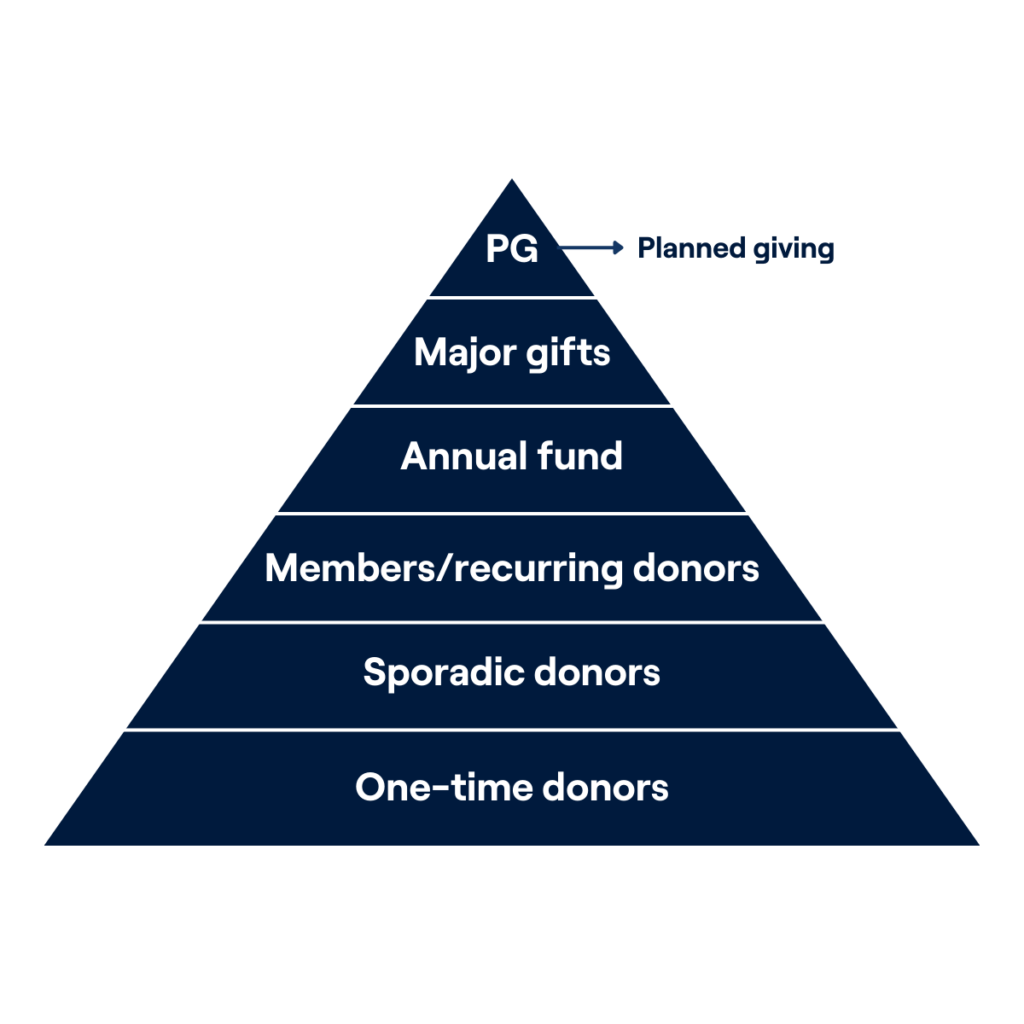Capital campaigns can be critical fundraising strategies for nonprofits, universities, and other organizations. They are especially useful for groups that need to raise a significant amount of funds for a specific goal or project. Importantly, organizations can utilize this strategy no matter their size.
If you aren’t familiar with capital campaigns or you’ve never run one, we’ve created an outline for you to get started. In this article you will find:
- The definition of a capital campaign
- How to start your capital campaign
- How to build your capital campaign
- How WealthEngine can help you power your capital campaign
What is a Capital Campaign?
By definition, a capital campaign is a focused fundraising effort by a nonprofit organization for a cause or specific purpose. This cause might be one large goal or several smaller ones. When multiple objectives are involved, it is what’s known as a “comprehensive” campaign.
It’s important to distinguish capital campaigns from regular fundraising efforts. Capital campaigns aren’t for everyday fundraising. They’re for large, mission-critical objectives.
This could be building an endowment fund, renovating premises, or launching a new charitable initiative.
Typically, two main triggers lead a nonprofit to execute a capital campaign:
- A pressing need for new resources. Maybe your organization is losing its current space, or it’s no longer fit for purpose. You urgently need a new home, but you want to keep serving your community. In this case, you might launch a capital campaign to raise the needed funds without disrupting your usual operations.
- The desire to leave a legacy. Sometimes, an organization wants to create a tangible, lasting impact. This could be a building that serves the community well into the future or an endowment. To fund this project, the organization might start a capital campaign.
A successful capital campaign brings together an organization’s leadership, volunteers, and donors, aligning their efforts toward the objective. It manifests itself not just in meeting or surpassing the fundraising goal, but also in strengthening the organization’s community bonds.
Naturally, the campaign also raises critical funds, which can then be used to fund the initiative.
Next, we’ll explore how to start a capital campaign for your organization.
How to Start a Capital Campaign
Before beginning a capital campaign, it’s important to determine whether it’s a good fit for your organization. You can start by answering the following questions:
- Do I have a specific goal?
- What is that goal?
- How can my team go about achieving that goal?
- What do I need to start a fundraising campaign to properly meet my goal?
Once you’ve answered these questions, you can begin the process of launching a campaign. The lifecycle of a capital campaign can be effectively divided into five distinct stages:
- The Planning Stage – At this point, you’ll make a comprehensive assessment of your time, resources, and fundraising goal. This will help you determine if your plan or plans are actionable based on your existing resources and criteria.
- The Silent Phase – This initial execution phase spans about 18 months. This focuses on courting your major gift leads and should secure at least 75% of your overall goal. Using a platform like WealthEngine, you can create highly targeted campaigns that speak to the missions and contexts of each lead.
- The Kick-Off Phase – Once all major donors have been approached, it’s time to share your campaign with the wider public. Ensure that you communicate your goals and your campaign’s broader significance to potential donors. This phase helps you edge closer to the finish line.
- The Public Phase – As you approach the end of your campaign, it’s time to connect with the community and smaller donors who will help you meet your final goal. At this point, your major donors have made commitments, the broader public has taken an interest, and you can focus on smaller donors to help bring your campaign to a successful conclusion.
- Wrap-Up and Evaluation Phase – After completing your campaign, take the time to reflect on what worked and what did not. This is the moment to assess the effectiveness of your campaign and apply the lessons learned to future fundraising initiatives.
How to Build a Capital Campaign
One of the best ways to build a successful capital campaign is to create a donor pyramid. This structure allows you to prioritize your fundraising efforts and categorize prospects based on their likelihood to engage. Building out your donor pyramid can help guide you through the different stages of your capital campaign.
You can follow these steps to build your donor pyramid:
- Review your database to determine the appropriate constituents that should be included in your campaign efforts, that are most likely to benefit your campaign.
- Take a moment to consider your internal bandwidth of budget, staff resources and compare those to the volume of constituents and your overall goal.
- Segment the constituents into the various giving levels appropriate for your constituent base and that add up to meet your overall goal.
- Work your way through each level of the pyramid, starting from the largest goals all the way down until each goal is met. These can be worked simultaneously, but you need to ensure the appropriate constituents are in each level.

If you find your campaign stagnating or underperforming during any stage, the donor pyramid can help steer it in the right direction. Without this targeted approach, you risk spreading your efforts too thin with a generic message to a random selection of your database, leading to lower ROI and engagement.
Wealth screening is a powerful tool that offers a comprehensive view of your prospects, letting you delve into their wealth, lifestyle, interests, and affinities. You can then place your prospects into different levels of your donor pyramid.
Using a solution like WealthEngine can improve this process considerably. It allows you to generate wealth insights and data, so you can more effectively categorize each of your leads.
Understanding Donor Motivations
There are generally four types of motivations that, when understood correctly, can help create a successful, structured approach to engaging potential donors.
- Philanthropy – Donors with philanthropic motivations want to help change the world.
- Connection – Donors motivated by affinity are those who wish to be connected to a cause that has similar values as their own.
- Reciprocity – Donors motivated by mutual benefit seek to help organizations that will provide them with some sort of advantage in return.
- Social Consciousness – Donors with social motivations don’t simply want to contribute to a cause, but also want to be part of a community.
By identifying these values, you can create targeted and personalized messaging or find other ways to effectively communicate with donors and make them feel inclined to support and contribute to future projects as well.
Use WealthEngine to Power Your Capital Campaign
WealthEngine serves as a powerful tool for nonprofit organizations embarking on capital campaigns. With its precision data and insights on potential donors, it enables you to conduct targeted and effective campaigns. This results in increased donor engagement and fundraising outcomes.
By leveraging WealthEngine, nonprofits can not only expand their donor base and decrease acquisition costs but also enhance the lifetime value of each donor.
Interested in learning more? Request a demo here.
Katerina Lauer is the Senior Director and head of SMB Advocacy & Education for Altrata. She has over 15 years of experience in both the Non-profit space and with WealthEngine specifically. She loves working with Non-Profits, helping them succeed in all their fundraising and development goals and is excited for the innovation Altrata is bringing to the industry.
